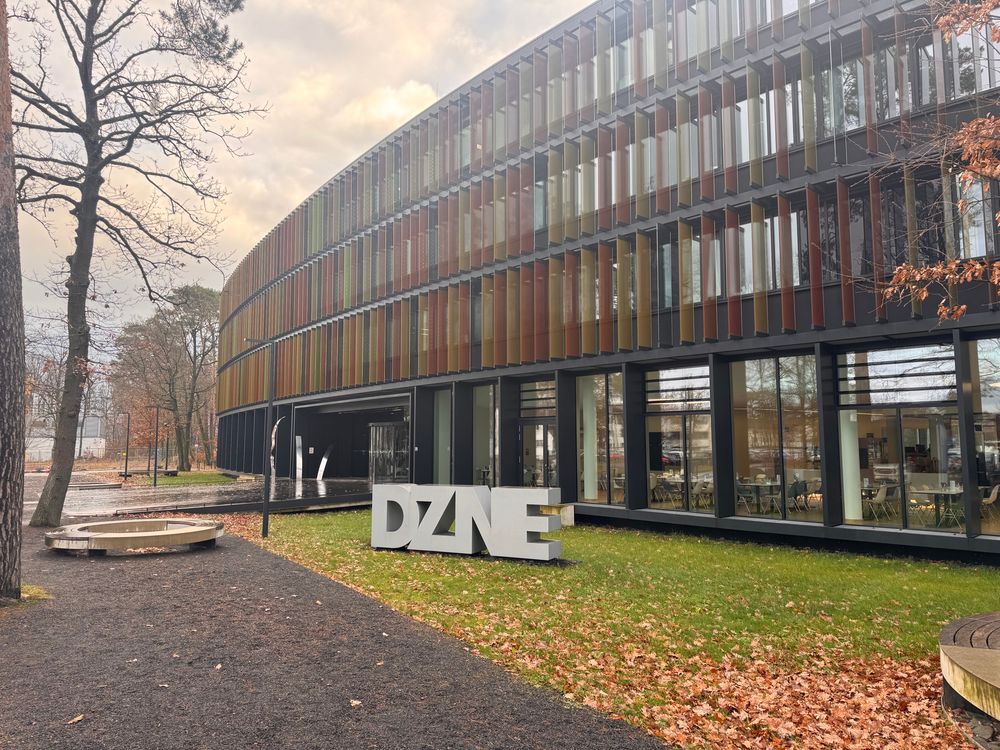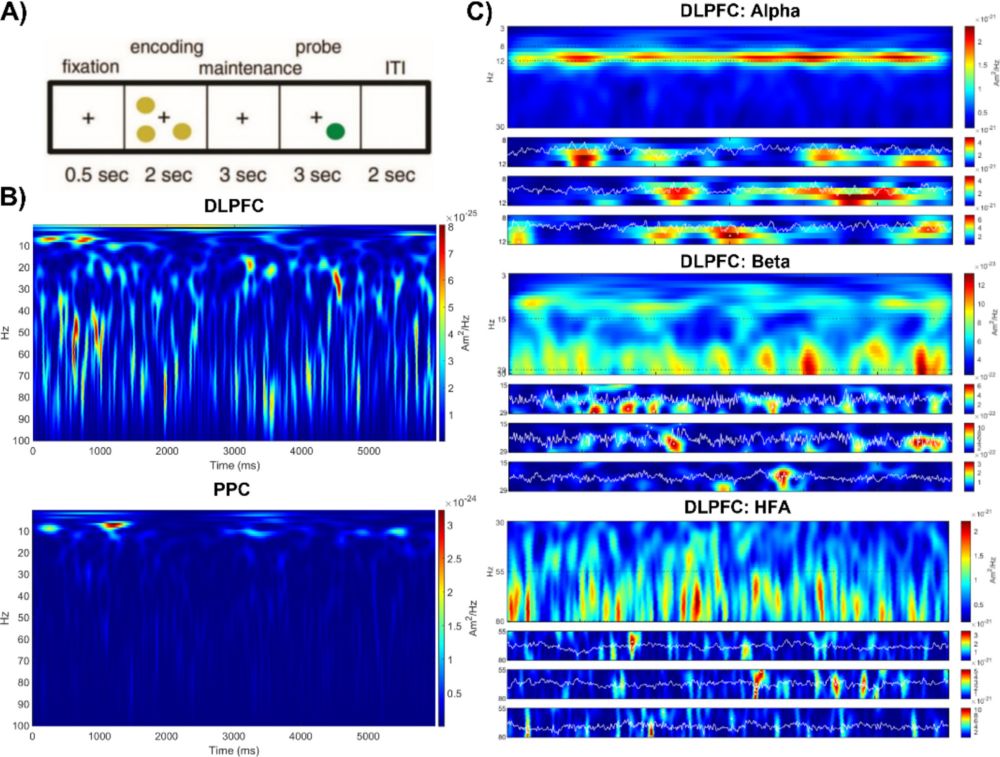
🌍 fabriziomusacchio.com
👨💻 github.com/FabrizioMusacchio
🐘 sigmoid.social/@pixeltracker
A recent attempt at this youtu.be/oxQyKByqDSU?...

A recent attempt at this youtu.be/oxQyKByqDSU?...

TL;DR: It’s now possible to train synaptic delays in large-scale spiking neural networks with high temporal precision—even in recurrent connections.
www.nature.com/articles/s41...

🎬 This is a new, HTML-based submission format for TMLR, that supports interactive figures and videos, along with the usual LaTeX and images.
🎉 Thanks to TMLR Editors in Chief: Hugo Larochelle, @gautamkamath.com, Naila Murray, Nihar B. Shah, and Laurent Charlin!
🎬 This is a new, HTML-based submission format for TMLR, that supports interactive figures and videos, along with the usual LaTeX and images.
🎉 Thanks to TMLR Editors in Chief: Hugo Larochelle, @gautamkamath.com, Naila Murray, Nihar B. Shah, and Laurent Charlin!
Are you interested in the dimensionality of neural data, but missed our #BernsteinConference workshop?
Worry not!
Instead, join me in this long thread (1/37) attempting to summarise it and (my view of) the field more broadly.

Are you interested in the dimensionality of neural data, but missed our #BernsteinConference workshop?
Worry not!
Instead, join me in this long thread (1/37) attempting to summarise it and (my view of) the field more broadly.

link.springer.com/article/10.3...
#neuroscience

link.springer.com/article/10.3...
#neuroscience
buff.ly/6VrO19l
buff.ly/6VrO19l
Brightfield, red = actin, blue = DAPI
📹: Postdoc Matyas BL (@Mongera lab, UCL)
Brightfield, red = actin, blue = DAPI
📹: Postdoc Matyas BL (@Mongera lab, UCL)
This is a @erc.europa.eu postdoc in a project between us and @sinzlab.bsky.social: miniature 2-photon, rich behavior tracking, and deep learning models linking natural behavior to cortical activity|RT
We - the @sinzlab.bsky.social (sinzlab.org) and @trose-neuro.bsky.social (troselab.de) Labs - are seeking an experimental postdoc to work at @unibonn.bsky.social with cutting-edge miniature 2-photon microscopy and gaze tracking in freely behaving mice.
This is a @erc.europa.eu postdoc in a project between us and @sinzlab.bsky.social: miniature 2-photon, rich behavior tracking, and deep learning models linking natural behavior to cortical activity|RT
Via Decision Formation Through Multi-Area Population Dynamics
Excellent short review.
doi.org/10.1523/JNEU...
#neuroskyence

Via Decision Formation Through Multi-Area Population Dynamics
Excellent short review.
doi.org/10.1523/JNEU...
#neuroskyence
We introduce a new ML model, LoRAX, for predicting olfactory responses from chemical features, a tricky problem that benefits from progress in ML for biochem. We combine LoRA fine-tuning with protein and chemical foundation models, www.biorxiv.org/content/10.1...

We introduce a new ML model, LoRAX, for predicting olfactory responses from chemical features, a tricky problem that benefits from progress in ML for biochem. We combine LoRA fine-tuning with protein and chemical foundation models, www.biorxiv.org/content/10.1...
#SfN2025 #vestibulo-VR #serotonin #predictive_processing

#SfN2025 #vestibulo-VR #serotonin #predictive_processing
Great review by @timothyoleary.bsky.social
(I steered clear of tasteless analogies for this one...)
authors.elsevier.com/a/1m7H5_LsQS...
Great review by @timothyoleary.bsky.social
Poster: Nov. 17, 1–5 pm, ZZ7
Info: tinyurl.com/mhdfb67u
Full video: youtu.be/mIt15LA-rZI?...
Poster: Nov. 17, 1–5 pm, ZZ7
Info: tinyurl.com/mhdfb67u
Full video: youtu.be/mIt15LA-rZI?...
✅ What's best is to add an institutional email your ORCID record so publications + funders collecting authenticated iDs in their processes can use the #TrustMarker assoc. w/ the institutional domain
More👇

✅ What's best is to add an institutional email your ORCID record so publications + funders collecting authenticated iDs in their processes can use the #TrustMarker assoc. w/ the institutional domain
More👇
Join us in Heraklion, Crete (May 19-22, 2026) for the 6th EMBO Workshop on Dendrites & Network Processing.
🗓️ Abstract Deadline: Feb 1, 2026 🔗 Register & Submit: meetings.embo.org/event/26-den...
#Dendrites2026 #Neuroscience #EMBO #Crete
Join us in Heraklion, Crete (May 19-22, 2026) for the 6th EMBO Workshop on Dendrites & Network Processing.
🗓️ Abstract Deadline: Feb 1, 2026 🔗 Register & Submit: meetings.embo.org/event/26-den...
#Dendrites2026 #Neuroscience #EMBO #Crete

📹: Adam Shellard
📹: Adam Shellard
This is where complexity meets art.
#retina #avian #bird #plexiformlayer

This is where complexity meets art.
#retina #avian #bird #plexiformlayer
Nature Communications Vol. 16, no. 1, p. 9926
Nature Communications Vol. 16, no. 1, p. 9926

buff.ly/JDp0rUo
buff.ly/JDp0rUo
doi.org/10.1093/cerc...

doi.org/10.1093/cerc...
Paper: www.nature.com/articles/s41...

Paper: www.nature.com/articles/s41...

